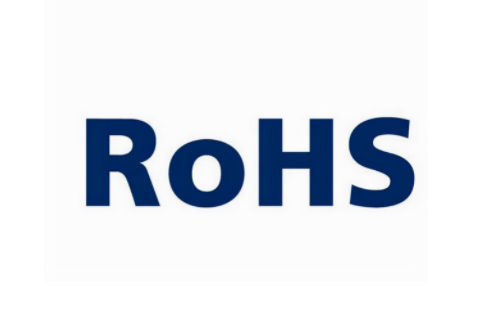Restrictions on hazardous substances in electronic products are upgraded. China's RoHS plans to add four phthalates
Date:2022-04-06 15:28:00 Views:2476
In order to implement the tasks proposed in the 14th five year plan for industrial green development, such as strictly implementing the control requirements for the restricted use of hazardous substances in electrical and electronic products, updating the catalogue of the control scope of electrical and electronic products, and formulating and revising the mandatory standards for the content limits of hazardous substances in electrical and electronic products, The working group on pollution control standards for electrical and electronic products of the Ministry of industry and information technology held the "kick-off meeting on deepening the management of restrictions on the use of hazardous substances in electrical and electronic products". The meeting analyzed the current industrial implementation and standardization progress of hazardous substances in the field of electrical and electronic products at home and abroad, and combined with the tasks proposed in the 14th five year plan for industrial green development, such as strictly implementing the requirements for the control of hazardous substances in electrical and electronic products, updating the catalogue of the control scope of electrical and electronic products, and formulating and revising the mandatory standards for the content limits of hazardous substances in electrical and electronic products, The next work plan is introduced.
Restricted substance upgrade
At present, the working group is investigating and demonstrating the feasibility of four phthalate esters (DEHP, BBP, DBP and DiBP) in the electrical and electronic industry, giving management and control suggestions according to the research results, and putting forward requirements in the form of the amendment of GB / T 26572 requirements for the limits of restricted substances in electronic and electrical products. It is expected to complete the standard amendment of GB / T 26572 limit requirements for restricted substances in electronic and electrical products by the end of September 2022.
Detection method update
At present, 9 GB / T 39560 series standards have been issued, covering 10 detection methods of hazardous substances (including four detection methods of phthalates). The expert group will further discuss the time when the detection method will be switched from GB / T 26125 to GB / T 39560 series standards. The specific switching time and method will be published in the form of CNCA announcement.

About the four new ortho Benzenes to be added
Di (2-ethylhexyl) phthalate (DEHP / DOP) (CAS No.: 117-81-7): it is the most widely used plasticizer. In addition to cellulose acetate and polyvinyl acetate, it has good compatibility with most synthetic resins and rubber used in industry.
Toluene butyl phthalate (BBP) (CAS No.: 85-68-7): it has good compatibility with most rubber and resins and strong solvation. It is used as a plasticizer with water resistance, heat resistance and oil extraction resistance.
Dibutyl phthalate (DBP) (CAS No.: 84-74-2): it is the most commonly used plasticizer for PVC. It can make the products have good softness, but poor durability. Its stability, flexural resistance, adhesion and waterproof are better than other plasticizers.
Diisobutyl phthalate (DiBP) (CAS No.: 84-69-5): it is one of the common main plasticizers. Its plasticizing efficiency is similar to that of DBP and has excellent solubility, dispersion and adhesion.
In electrical and electronic products, it may exist in wires and cables, plastics, paint, ink and other materials.
Substance (phthalate)
Phthalate ester is the general name of a class of compounds. It is generally a colorless oily viscous liquid. It is difficult to dissolve in water and easy to dissolve in organic solvents. It is not easy to volatilize at room temperature. It has low cost, many varieties and large output. It is mainly used as plastic plasticizer, which can greatly increase the plasticity and softness of polymer materials such as plastics, reduce brittleness, and make plastics easy to process and form and make various soft plastic products. Phthalates can also be used to soften rubber, lubricants, adhesives, polymer additives, softeners for printing inks and coatings. It is widely used in hundreds of products, such as electronic appliances, toys, food packaging materials, medical blood bags and hoses, vinyl flooring and wallpaper, detergents, lubricants, personal care products and so on.
With the waste, recycling and disposal of electrical and electronic products, a large number of phthalate compounds will flow into the ecological environment and have an impact on the ecological environment and human health. It is very necessary to reduce or avoid the use of harmful substances in electrical and electronic products from the source. As early as 2015, the European Union officially issued (EU) directive 2015 / 863, which incorporated four phthalates into RoHS 2.0 to increase the chemical safety of electronic and electrical equipment (EEE) and promote recycling. If it exceeds the limit requirements, it cannot be sold in the EU market.
In the context of the current double carbon target, with the technological progress and continuous promotion of the electrical and electronic industry, new materials, new processes and new products are emerging, and relevant policies and standards are also tightened and tend to internationalization. The work deployment related to this meeting will be a comprehensive revision and upgrade for China's RoHS, especially the addition of four phthalates, which will have a great impact on the domestic electrical and electronic industry.




 Weixin Service
Weixin Service

 DouYin
DouYin
 KuaiShou
KuaiShou





















